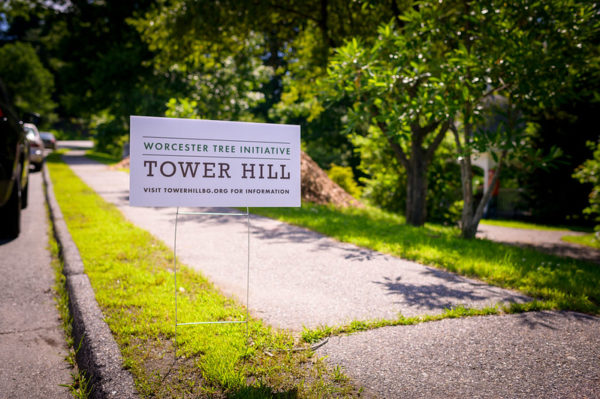
By Ruth Seward Director, Outreach & Community Engagement
“The best time to plant a tree was 20 years ago; the second best time is now” – Chinese Proverb.
With news reports of extensive land development, global deforestation and increased weather disasters, it is hopeful for me to read about the growing interest in mass tree plantings throughout the United States. Planting a tree today will not instantly rebalance our landscape; however, it is a critical gift we can give to inhabitants of future earth to improve the health of our planet and all who reside here.
In the United States alone, millions of trees will be planted in the next decade. The’ Keystone 10 Million Trees Partnership’ in Pennsylvania recognizes the need to replace riparian trees, or trees next to waterway systems. Their planting partners include the Chesapeake Bay Foundation since riparian trees improve water quality and the water quality of Pennsylvania’s waterways directly affects the health of Chesapeake Bay. In 2015, the Arbor Day Foundation initiated a goal of planting 20 million trees in 20 years in our national forests in partnership with the U.S. Forest Service. The National Forests Foundation has set a goal planting 50 million trees in natural landscapes, recognizing the need to preserve our forest health.
Cities around the nation have also been assessing their urban tree canopy health and increasing tree plantings through private/public initiatives. Some were inspired by New York City which just completed an impressive replanting effort; Million Trees NYC. Other municipalities are motivated by increased urban temperatures and other problems with a built environment. In 2015, Cleveland, OH recognizing that they were losing 97 acres of trees each year to development, created a goal of increasing tree canopy cover from 19% to 30% by 2040. Louisville, KY was worried about their status as one of the 5 worst cities for heat island temperatures, now has launched a goal to regain the 54,000 trees it has lost between 2004 and 2012. In Los Angeles, CA, the city’s first ‘tree officer’ has set a personal goal of planting 90,000 trees by the year 2021 with the hope of mitigating the environmental crises effecting that region.
Worcester Tree initiative (WTI), an Outreach Program of Tower Hill Botanic Garden, replanted many trees in response to the Asian Long Horned Beetle infestation. Their work, in partnership with the city of Worcester Forestry Department and the state’s Department of Conservation & Recreation (DCR), replanted close to 35,000 trees since 2009. The Massachusetts DCR has taken community tree planting models learned in Worcester and continued to coordinate an urban tree planting program in the Gateway cities in Massachusetts due to the benefits trees provide for everyone in a city.
The value of trees cannot be overstated. Trees improve our environment in ways that human engineering cannot. Trees are critically important to the balance of the water cycles in our earth’s atmosphere. They reduce temperatures around them, thereby mitigating urban heat island and the effects of warming due to carbon emissions. Trees are the biggest oxygen producers on land (a large amount of oxygen is produced by phytoplankton in our oceans). Without trees and other oxygen producing plants, we simply could not exist. As our world evolves over the next ten years, increasing green plants and trees in our rural and urban environments makes sense. In the words of American teacher, poet and author Lucy Larcom: “He who plants a tree, plants a hope.”
